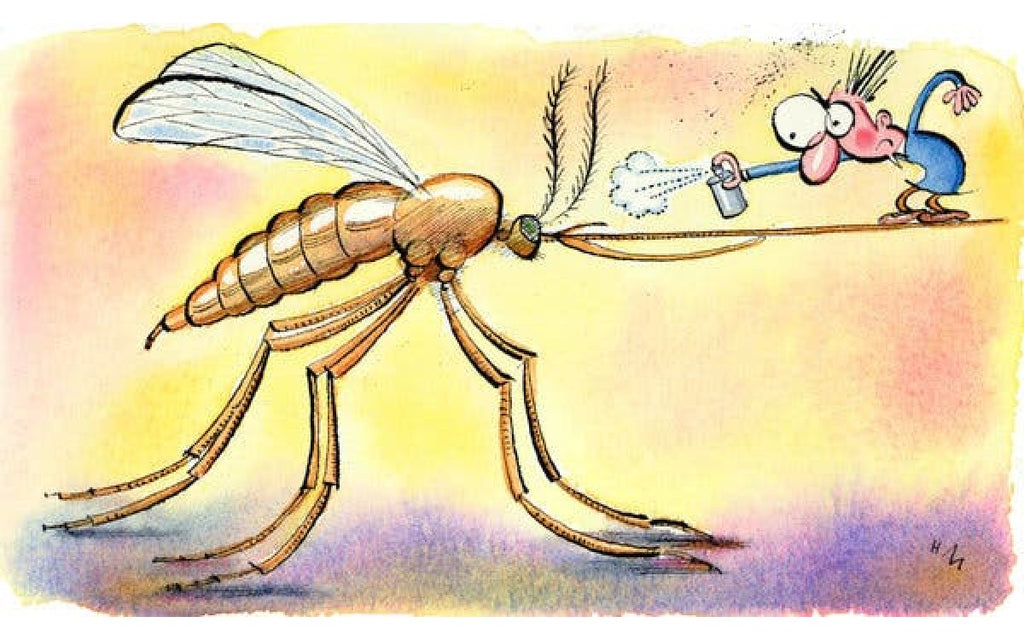Let’s re-learn our insect repellent technique!

Let’s re-learn our insect repellent technique!
We would think that as dwellers of this tropical metropolitan state called Singapore, we would have figured out everything we need to know about preventing insect bites, wouldn’t we?
But have we been doing it correctly? Do you still get bitten by mosquitoes even though you are pretty sure you do not forget about repellents before you step out? Did you get insect bites at certain spots on your body where you least expected?
Let’s wonder no more and let’s revisit the basics of insect repellents.
The science of repellent – simplified
To be honest, there have been debates on how biting insects respond to the repellents on our skin. We will explain to you two versions, as proven by research.
- The Invisibility Cloak
If Harry Potter were to go backpacking on our beautiful tropical paradise of South East Asia, he would wish he packed his invisibility cloak in.
Researchers from Rockefeller University, New York have studied how insects respond to DEET and found that repellents like DEET confuse the receptors in the insect nervous system that process odours. This response masks the odours of our body that would normally attract biting insects.
In other words, they can’t sense us.

Illustration by Chris Gash
- Too Stinky for Mozzies
You would think that biting insects like mosquitoes have no issue with bad smell, wouldn’t you?
Think again. Another group of researchers from University of California Davis, California studied the same thing and found the opposite. Mosquitoes do dislike the smell of DEET. According to the research, mosquitoes have olfactory receptor neurons that can detect repellents like DEET display avoidance behaviour by flying away from the source of smell.
We can say that even mosquitoes have their own least favourite smell.

Illustration by Chris Gash
The basics of repellent application - explained
We have seen so many types of dance moves people make when they apply insect repellents. From the hip hop-style rapid repetition up and down your arms and legs as you rub the repellent, to the new-age swirl of aerosol repellent from head to toe. There’s no need to be kiasi and let’s learn these basics:
- Cover up your skin – As much as you reasonably can in Singaporean weather with long clothing.
- Apply on exposed skin only – Leave no empty spot, and be mindful of your facial area and wounds.
-
Apply over clothing – Add a layer of repellent on your clothing next where possible.

Definitely do not do this to your face. Apply on your hand first, rub and then gently apply to your face and ears with your hands. Photo credit: Daniel Grill
Your arsenal of insect repellents - debunked
There is a myriad of insect repellents in the market from drugstore all the way to online shops. What are the differences and how do we know any one of them is good?
Insect repellents sold in Singapore have be registered with National Environment Agency (NEA), but exemption applies to those of plant/natural origins such as essential oil,neem and citronella.
So how do we choose good repellents from the second category since it is not regulated by NEA?
According to Centers for Disease Control and Prevention (CDC), it is recommended to use repellents approved by Environment Protection Agency (EPA)that contain any of the active ingredients below, as these are proven safe and effective, even for pregnant and breastfeeding women:
- DEET
- Picaridin (known as KBR 3023 and icaridin outside USA)
- IR3535
- Oil of lemon eucalyptus (OLE) or para-menthane-diol (PMD)
- 2-undecanone
© Jo-Lynn Teh, BCE
Jo-Lynn Teh is ESA Board Certified Entomologist based in Singapore. While her specialisation is on tropical insects that affect public health and agriculture, Jo-Lynn’s passion is also to help people understand insects. Find her on LinkedIn.

Leave a comment